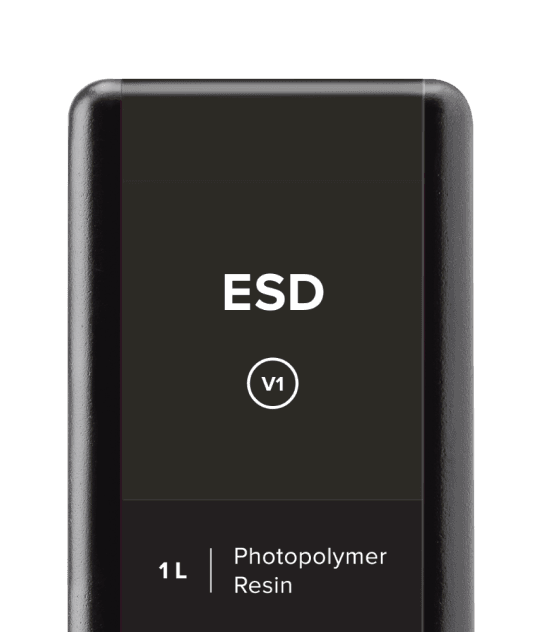ESD Resin
Engineering
SLA
Stiff & Strong
44.2 MPa
1.937 GPa
61 MPa
Select Printer Series and Resin Volume
| Bulk order quantity (L) | Discount % |
|---|---|
| 1 | 0% |
| 30 | 15% |
| 60 | 20% |
| 120 | 25% |
| 240 | 30% |
| 1,000 | 35% |
| 2,000 | 40% |
| 3,000 | 45% |
Choose ESD Resin to prototype and validate electronics production workflows, print static-dissipative parts that repel dust and powder, and create enclosures to protect sensitive electronics from static discharge.

ESD Resin has been added to your cart.

Why Choose ESD Resin
Use ESD Resin to reduce risk and increase the yield on your manufacturing line by 3D printing custom tools, jigs, and fixtures for automotive, aerospace, electronics manufacturing.
Static-Dissipative
Protect your critical electronics from unregulated static discharge to prevent component failures.
High Toughness
With its high modulus and impact strength, ESD Resin is made to withstand operation on the production line.
Applications
ESD Resin is a cost-effective solution for producing static-dissipative parts designed to endure use on the factory floor.
ESD Resin is ideal for:
Material Properties
Post-cured at 70ºC
Surface Resistivity
Ultimate Tensile Strength
Tensile Modulus
Strain at break
Notched Izod
Heat Deflection Temperature 0.45 MPA
Heat Deflection Temperature 1.8 MPA
Post-Processing
Washing
The foundational step in any SLA post-processing workflow is to remove any excess resin on the surface of the parts through an alcohol or ether wash.
Curing
Post-curing Engineering and Specialty Resins is essential for parts to achieve their full strength and functionality. This step completes the chemical reaction initiated during printing, transforming the part from its green state into a fully finished component.

